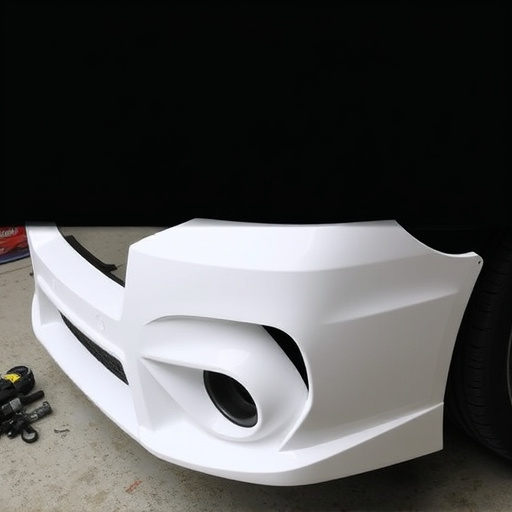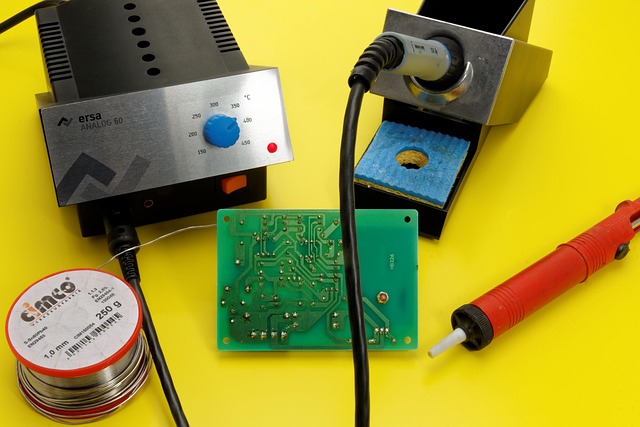Tesla's advanced thermal management system relies on liquid cooling, heat pipes, and thermoelectric modules for optimal EV performance and range. Regular checks, including inspecting radiators, temperature sensors, and using thermal imaging to detect anomalies, are crucial for maintaining vehicle health and extending the lifespan of critical components. Timely diagnosis and repair through professional services prevent heat-related damage, ensuring peak efficiency and driver satisfaction.
Tesla vehicles are renowned for their cutting-edge technology, including advanced thermal management systems designed to optimize performance and efficiency. However, over time, these systems can experience efficiency loss due to various factors. This article delves into the diagnosis of such losses, focusing on the Tesla thermal management check. We’ll explore how to understand and identify inefficiencies through thermal analysis, along with practical steps to conduct a comprehensive check for optimal vehicle health.
- Understanding Tesla's Thermal Management System: A Brief Overview
- Identifying Efficiency Loss Through Thermal Analysis
- Practical Steps for Conducting a Tesla Thermal Management Check
Understanding Tesla's Thermal Management System: A Brief Overview

Tesla’s thermal management system is a complex network designed to maintain optimal temperatures for both passenger comfort and electric vehicle (EV) efficiency. This intricate system utilizes advanced technologies, including liquid cooling, heat pipes, and thermoelectric modules, to regulate heat flow throughout the vehicle. It plays a crucial role in preventing efficiency loss by managing temperature extremes, from keeping batteries cool during high-performance driving to maintaining comfortable interiors in hot climates.
A thorough understanding of this system is essential for performing an effective Tesla thermal management check. This involves inspecting components like radiators, cooling fans, and temperature sensors to ensure they operate efficiently. Regular maintenance of these systems not only extends the lifespan of the vehicle but also ensures that drivers experience peak performance and range, enhancing the overall satisfaction with car bodywork services and automotive repair. Moreover, timely diagnosis and resolution of thermal management issues through professional car repair services can significantly mitigate potential damage caused by excessive heat buildup, thereby safeguarding the EV’s long-term health.
Identifying Efficiency Loss Through Thermal Analysis

Identifying Efficiency Loss Through Thermal Analysis
Tesla thermal management checks are crucial for diagnosing efficiency loss in electric vehicles. By utilizing advanced thermal imaging technology, technicians can uncover potential issues within the vehicle’s intricate systems, such as the battery pack and motor. Thermal analysis provides a detailed look at heat distribution, allowing professionals to pinpoint areas of inefficiency or potential failure. This non-invasive method is particularly valuable in the early detection of problems, preventing more serious—and costly—reparations down the line.
In automotive collision repair, including bumper repair scenarios, understanding thermal patterns can be instrumental in assessing overall vehicle health. Just as in other complex machinery, unusual heat signatures may indicate damaged components or misaligned systems. Through meticulous thermal management checks, auto collision repair specialists can ensure that a vehicle’s efficiency is restored to its optimal state, enhancing performance and extending the lifespan of critical parts, even after an incident like a fender bender.
Practical Steps for Conducting a Tesla Thermal Management Check

Conducting a Tesla Thermal Management Check involves several practical steps to ensure your vehicle’s optimal performance and efficiency. Start by examining the car’s exterior for any signs of damage or leaks, as these could indicate issues with the thermal management system during a collision or impact event. A thorough inspection includes checking the radiators, cooling fans, and heat exchangers for any debris, corrosion, or blockages that might hinder their functionality.
Next, use specialized diagnostic tools to monitor temperature levels throughout the vehicle, especially in key components like the engine, battery, and inverter. Compare these readings against manufacturer specifications to identify anomalies. During this process, pay close attention to sudden spikes or drops in temperature, as they could signal problems with the cooling system or insulation. Moreover, consider consulting a professional auto collision center if you suspect significant damage that might require complex vehicle body repair, ensuring your Tesla’s thermal management system is restored to its peak efficiency.
Tesla vehicles are renowned for their innovative technology, and efficient thermal management is key to maintaining optimal performance. By conducting regular Tesla thermal management checks, owners can identify potential efficiency losses early on. This simple process involves analyzing key components and using thermal imaging to pinpoint issues like hot spots or inadequate cooling. With these insights, drivers can take proactive measures to ensure their Tesla remains a powerful and eco-friendly machine, enhancing both its longevity and sustainability. A thorough understanding of this system empowers owners to stay ahead of any efficiency challenges, contributing to a smoother and more environmentally conscious driving experience.














